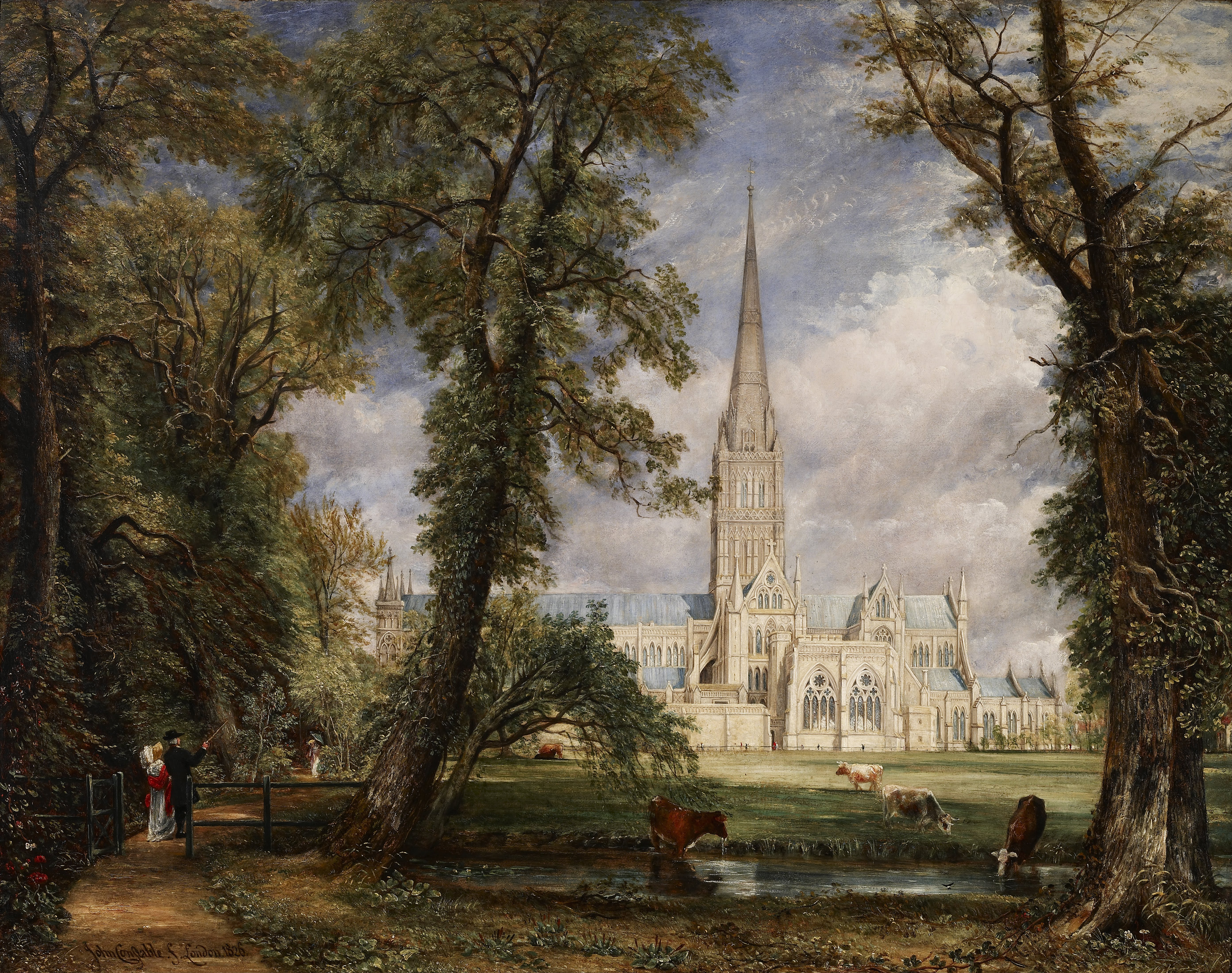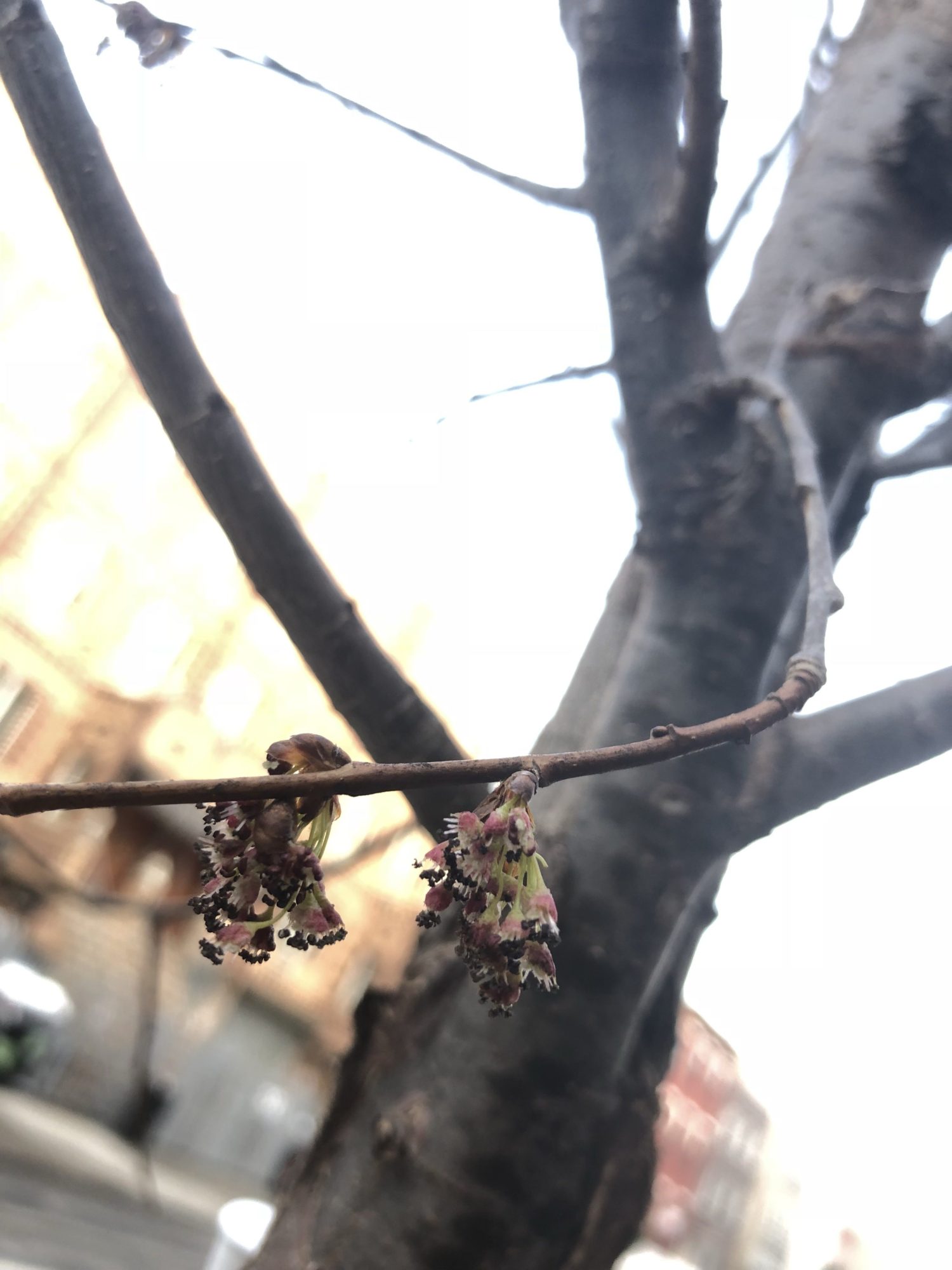Princeton Elm, 725 Leonard Street, Greenpoint
by José Miguel López

The snow had stopped falling a few hours before and the dripping water now punctuated the sound of my own steps on the wet sidewalk. The sparrow I had spotted on the treetop took flight as I approached the young tree. I checked the number on the building behind me. 725. This slender fellow was definitely my subject. But I couldn’t be sure about his age. He did look young, though—still a sapling, many decades away from maturity, which for these trees comes closer to 60. Yet he was already about 15 feet tall. The tag identified him as a Princeton elm, a cultivated variety of American elm that shows good resistance to both beetles and the lethal fungus that causes Dutch elm disease.
The tree is the 500th tree planted as part of the Greening Greenpoint project, and after today’s equinoctial snow, most of it now melted, it seems ready to spring up and reach for the sun. As I observe its new, smooth bark, I can’t help but think of all the things that can and will happen before this sapling grows to be like one of those stunning giants that the painter John Constable portrayed and loved. The majesty of the English elms that grow on his canvases give me one certainty about the future: this segment of Leonard street will be one of the most beautiful ones in Greenpoint, no matter what happens to it’s buildings. As the sun starts to set, it is not hard to picture the cool golden light below this elm’s shade, the massive trunk, speckled with velvety moss near the roots. In a neighborhood where half a block can disappear in a week to make room for scores of tiny luxury apartments, trees —and the space they carve out of light, air, and time— become once again the only reliable custodians of our collective memory.
Northern Light

I grew up in Caracas, a city near the equator. Elms to me —along with oaks, maples, and birches— were exotic northern trees that I could only find in books and movies. Nightmare on Elm Street was probably my first reference to one in English. Superficially, the movie had nothing to do with trees. Yet the elms that give that Middle American street its name are at the center of the psychological terror the movie seeks to explore. Perfect lawns and quiet suburban streets lined by towering elms are the postcard picture of post-war America. The peaceful arrogance of elms, which in this context operate as symbols of American economic and cultural self-satisfaction, provided the ideal backdrop for the horrific past secrets of our parents to sneak into depths of our subconscious and tear us apart in our dreams.
It was much later that I found out elms had their own sinister reputation outside the realm of pop culture. Their sturdy, lower boughs made them an easy choice for hangings. One of New York City’s oldest trees, the “Hangman’s Elm” of Washington Sq., is reputed by fact and legend to have been a place for public executions. Elm wood was also the favorite wood for English casket builders, and medieval Scottish archers liked it better than yew as the main component of their armor-piercing longbows. Some even believe elms capable of letting a branch go at will just to hurt unwary humans trying to find shelter below their canopy.
There are some practical reasons behind this dark reputation: the pliability and water resistant qualities of elm timber just made it an ideal choice to make caskets and longbows. Other reasons, however, lie at the foundation of our collective imagination. Humans have long associated elms with the underworld. Like the ash or yew Yggdrasill of Norse cosmology, elms are considered a living threshold between two worlds (spiritual-material, earth-heaven, up-down) and, as such, were part of death rituals in ancient European cultures. And through elms we visualize the amazing lyrical power that emanates from Orpheus’ deepest sadness: as he sings the loss of Eurydice at the verge of freedom from Pluto’s dark kingdom, an entire grove of elms shoots right out of the ground; Earth itself gets goose bumps at the beauty of his song of love and despair, and elms, like standing hair in excited follicles, are the tangible evidence of that reaction.

As a sacred tree connected to death, loss, and transition, the elm is also associated to life, fertility rites, and rebirth. In Celtic mythology, elms are believed to be a gateway to the world of faeries, which leads me to believe they can radiate that immortal energy back to the dead earth as they reawaken on spring. May Day dances to celebrate rebirth and fruitfulness were commonly performed around elm trees in ancient times. And at a purely practical level, elms are also considered life-giving. Elm leaves are still used to feed cattle, especially when other sources of food are scarce, and elm bark’s healing properties are on sale at Walmart, in the form of Thayer’s Famous Slippery Elm Lozenges. Finally, Elms are also habitat for birds, mammals, and insects. Squirrels, sparrows, woodpeckers, butterflies, beetles and opossum can all find comfortable accommodations and food resources within the fractal architecture of its structure.
Killing the Sacred Elm
Elms are also survivors. I first learned about Dutch elm disease, the fungal infection that put the European and American varieties of elm on the verge of extinction, when I worked at the visitor’s information kiosk at the Boston Common. The story about how the disease finds its way to North America ties back to that post-war reality that elms came to symbolize. The demographic explosion in the fifties generated a high demand for hardwood timber, and some of the wood imported from Europe to satisfy that demand happened to be infected by the beetle that bears the disease.
The rest is history, and it is well documented: more than 75% of the estimated 70 million elms in North America in 1930 had died by 1989. One need only picture the size of such a dead forest to grasp the dimensions of the disaster, one that changed forever the American urban and suburban landscape. It is hard for us—a dangerously resilient species ourselves—to not identify with this tree’s ability to recover after such devastation. In this context, seeing this young elm take back its place on a city sidewalk is a reminder of the slow but inevitable progress of our own weary hopes and dreams.
Hanging Memories
 Our little friend 500 is not alone in the sidewalk. There are other young partners planted a few feet apart, and just as eager to breathe and grow. No trees lived on this block of Leonard Street before; the positive effects these new residents will have on their surroundings is already apparent, as that little sparrow that flew away earlier can attest. Chief among them is the promise of a rustling shade for our community to breed its own memories: Children playing in it, families strolling beneath it, a kiss shrouded by it’s moonlit equivalent. Economic realities and demographics in Greenpoint will change, and so will these trees, but at a much slower pace, so let us hang our memories in their branches and see them grown vertical and sturdy. I’m already hanging my own from the thin boughs of 500, and I hope they will remain there among the leaves long after I am gone.
Our little friend 500 is not alone in the sidewalk. There are other young partners planted a few feet apart, and just as eager to breathe and grow. No trees lived on this block of Leonard Street before; the positive effects these new residents will have on their surroundings is already apparent, as that little sparrow that flew away earlier can attest. Chief among them is the promise of a rustling shade for our community to breed its own memories: Children playing in it, families strolling beneath it, a kiss shrouded by it’s moonlit equivalent. Economic realities and demographics in Greenpoint will change, and so will these trees, but at a much slower pace, so let us hang our memories in their branches and see them grown vertical and sturdy. I’m already hanging my own from the thin boughs of 500, and I hope they will remain there among the leaves long after I am gone.
The Princeton Elm that is the subject of this essay will be celebrated this coming Wednesday, April 11th at 4:30 pm. Come join representatives from the city and other local environmental groups for refreshments and more.



